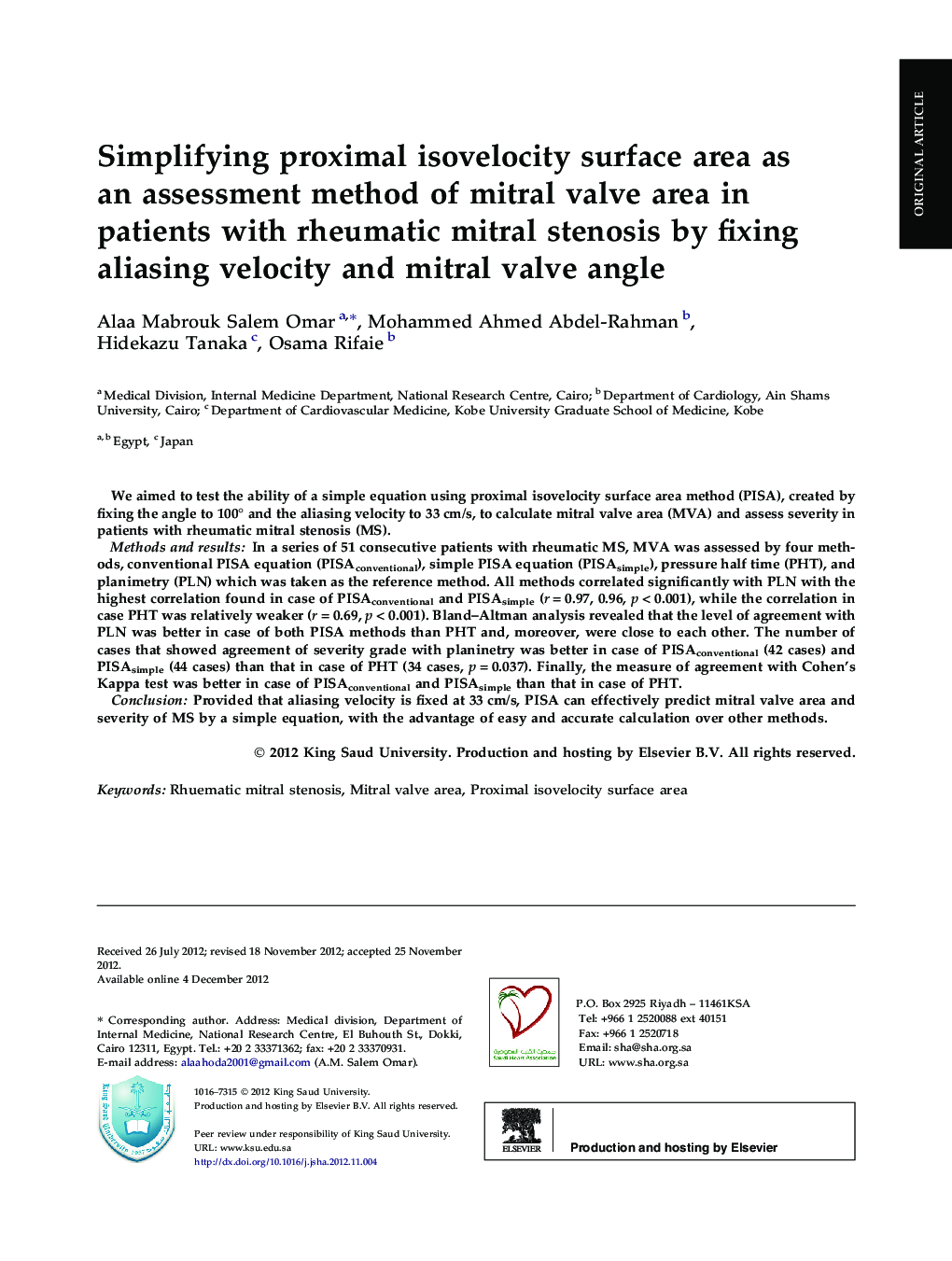| Article ID | Journal | Published Year | Pages | File Type |
|---|---|---|---|---|
| 2978295 | Journal of the Saudi Heart Association | 2013 | 9 Pages |
We aimed to test the ability of a simple equation using proximal isovelocity surface area method (PISA), created by fixing the angle to 100° and the aliasing velocity to 33 cm/s, to calculate mitral valve area (MVA) and assess severity in patients with rheumatic mitral stenosis (MS).Methods and resultsIn a series of 51 consecutive patients with rheumatic MS, MVA was assessed by four methods, conventional PISA equation (PISAconventional), simple PISA equation (PISAsimple), pressure half time (PHT), and planimetry (PLN) which was taken as the reference method. All methods correlated significantly with PLN with the highest correlation found in case of PISAconventional and PISAsimple (r = 0.97, 0.96, p < 0.001), while the correlation in case PHT was relatively weaker (r = 0.69, p < 0.001). Bland–Altman analysis revealed that the level of agreement with PLN was better in case of both PISA methods than PHT and, moreover, were close to each other. The number of cases that showed agreement of severity grade with planinetry was better in case of PISAconventional (42 cases) and PISAsimple (44 cases) than that in case of PHT (34 cases, p = 0.037). Finally, the measure of agreement with Cohen’s Kappa test was better in case of PISAconventional and PISAsimple than that in case of PHT.ConclusionProvided that aliasing velocity is fixed at 33 cm/s, PISA can effectively predict mitral valve area and severity of MS by a simple equation, with the advantage of easy and accurate calculation over other methods.
